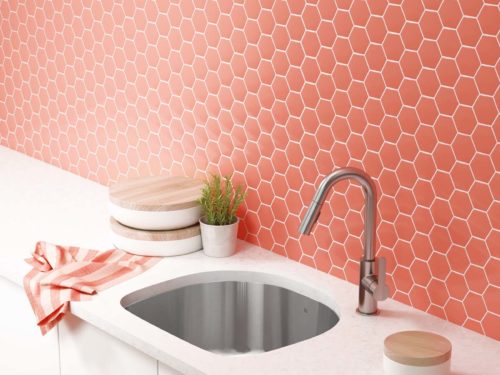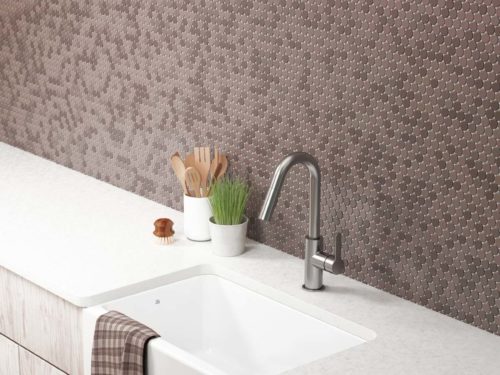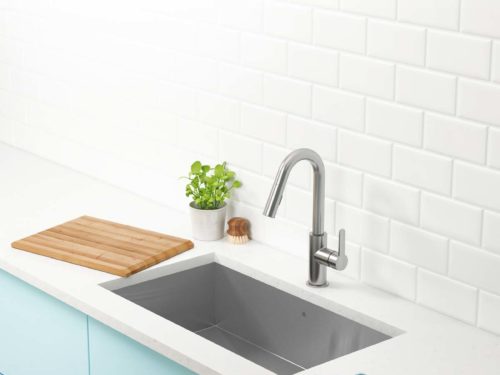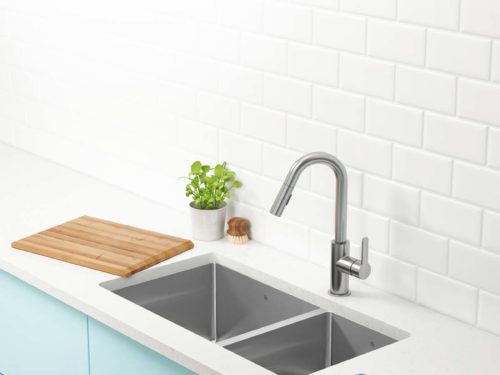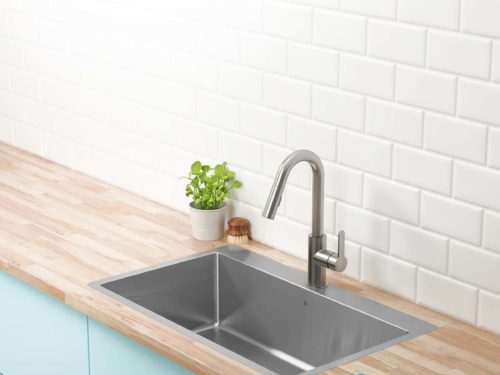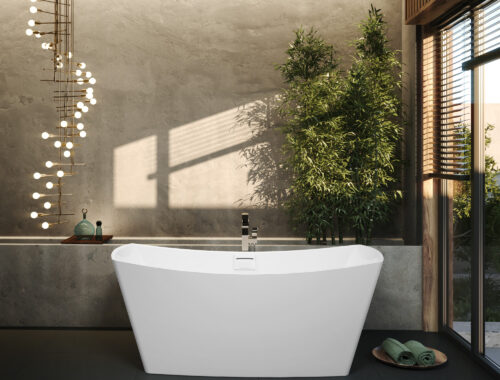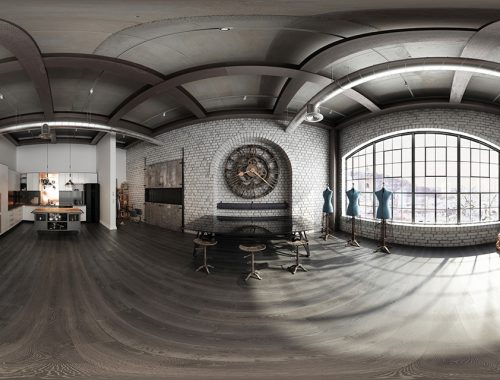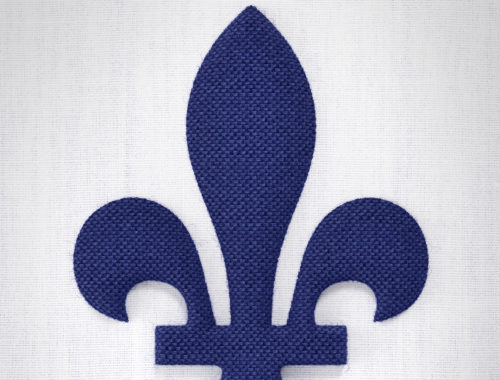Filed under: Pourquoi la 3D.
Are you familiar with the 5 R’s of zero waste, popularized by blogger Bea Johnson? According to these rules, to adopt an environmentally-friendly way of life, we need to:
- Refuse single-use products;
- Reduce our consumption of goods;
- Reuse anything that can be reused;
- Recycle everything that cannot be reused;
- Rot, meaning to compost.
At a time when commercial practices are being called into question the world over, 3D is undeniably an economical and sustainable solution. And while economical signifies reduced costs, it also means reduced consumption. As we celebrate Earth Day, let’s take a look at how 3D can be a first concrete step in adhering to the refuse, reduce and reuse approach.
Refuse and Reduce
One of the main advantages of 3D is that it is free of physical constraints. An image can be created using virtually nothing. All that’s needed is a computer and a motivated and creative artist. In other words, it does away with photo sessions and filming.
As a result, there’s no need for the transport and handling of equipment both to and from the studio. It also eliminates all the travelling required by everyone involved in the transport and handling. And there’s no scenery to be built either, so there’s no call for material that will only be used temporarily and there’s no waste of non-reusable components. In terms of logistics, a lot of time can be saved because there’s no need to coordinate and supervise everything. Finally, and most importantly, if we’re not satisfied with the end result, we don’t need to bring together all these resources and use them again.
Reuse… and Reduce!
There are two concepts that are essential in better understanding the reuse and sustainability of 3D.
The first concerns the 3D environment. When we create a 3D setting, we don’t design an image, we design a scene. We can move around within this scene and then capture one or several images. To put it simply, we don’t draw a picture, we build a model.
The second concept relates to the elements that make up this environment. To integrate a product into a 3D image, we need to render it. This means digitally creating a model of the product in three dimensions. What’s interesting is that the rendered product exists independently from any image. It has its own separate file.
As such, both the environment and the product have several lives.
One Product, Several Atmospheres
To showcase a product, it needs to be given context, an atmosphere. (As we pointed out in the article Who Is Kub Studio?, customers don’t buy a product, they buy a feeling.) But can an item be shown in its best light within several different environments? Absolutely! If that wasn’t the case, everyone who owned the same sink from the same company would have exactly the same kitchen!
First of all, this means that we can reuse a rendered product whenever and however we want. All we need to do is integrate the render into different environments. We can take this one step further by drawing a parallel with a photo shoot. In order to obtain a similar result, we’d need to build several scenes. Although this also applies to 3D, it requires considerably less resources.
Secondly, we can make adjustments to the environment. Imagine you’re changing the backsplash in your kitchen. You’re not building a new room, you’re just refreshing its look. This is what we do when we create another version of an atmosphere. We reuse the same environment, giving it a different feel by simply making minor changes (which sometimes make all the difference!).
One Atmosphere, Several Products
Now, let’s say you want to present a line of products which are all suited to a specific style. Each product brings something a little bit different to its environment. Why not highlight these subtleties by comparing the different products within the same environment? In doing so, we’re reusing by integrating different models into the same atmosphere.
An Extended Useful Life
Though the examples we’ve provided are mainly in the present, using variations is a way of reusing the image over time while refreshing it.

Say for example that you manufacture the cabinets and drawers as well as the accessories shown above. One day, you stop making the cabinets, but not the accessories. The image can outlive this natural stage in your progression. It’s simply a question of rendering your new cabinets and integrating them into the existing image. Similarily, if the accessories are discontinued, nothing could be easier than replacing them.
Likewise, if a product evolves, its model can evolve too. It doesn’t need to be fully rendered again from scratch. Accessories can also be added to existing models, and textures, finishes or simply the colour can also be reworked. Think of an armchair you’ve reupholstered or a patio you’ve stained. It’s the same objet, it’s just been optimized in order to extend its useful life.
In short, these are only a few ways to reuse 3D models and images. By reusing, we reduce the number of necessary models and images. These numbers are so limited that the resources required to produce them are by the same token also reduced.
Savings
The most significant savings are undoubtedly those make by eliminating the need for a photo shoot or filming. Studio time alone can cost an arm and a leg. And that’s excluding the hours invested by all the necessary human resources and the cost of renting equipment. With 3D, we take into account the fixed costs of the technology, the salary of the artist or technician… and that’s it.
As for using variations, they favour economies of scale in terms of resources and expenses. Instead of producing several images, which are basically the same give or take a few minor details, at full price, we create just one image at full price and produce different versions of it at a reduced cost. We can then harness the full potential of these images. Because there’s an infinite range of possible variations, they age like fine wine.
Another source of savings is the resolution of the images. Because the resolution is very high, you need only one image for all your visual media. Multiple formats, having to convert them, storing several files isn’t necessary… Just One. Single. Image. The image is of such high quality that it can be used on a website, printed in a catalogue and displayed on a huge billboard.
Finally, as we discussed in the article Three Ways of Taking Advantage of Exploded Views in the Industrial Sector, 3D minimizes printing needs. An image is worth a thousand words. Although we’ve heard the expression time and time again, it is nonetheless true. The use of images shortens the length of printed documents. (Beware however as the overuse of images increases the amount of ink that is used and the associated costs. The key is to strike the right balance.) It may be just a small gesture, but 3D can be a good start in making a more affordable and sustainable transition.
It would be presumptuous to claim that 3D could save the world. However, we’d be fools to pass it up. While bringing around profound and dramatic changes is not within everyone’s reach, the willingness to do better is possible.
Of course, we’re admittedly “biased.” This article, despite all its good intentions, is a way of promoting our services. But nothing we’ve said has been invented or exaggerated. These are practices and values in which we believe, and which we apply on a daily basis. They truly represent some of the reasons why we strive to democratize and develop 3D. It’s a simple, sustainable, economical and win-win solution for both businesses and the environment. If it’s a first step in the right direction, we would do us proud.
Filed under: Pourquoi la 3D.
Read more
View all posts


